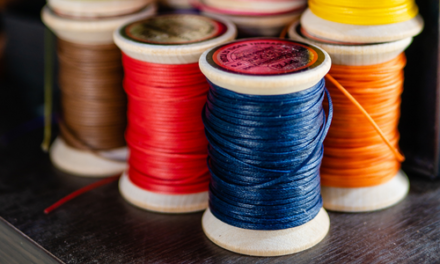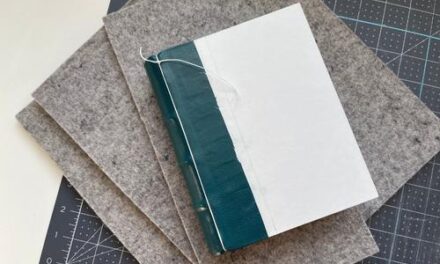In my early book making days, bookbinding commission requests were far and few between. Friends and family were patient and gracious, allowing me ample time to work on each book. After a while, though, word of my passion spread. It wasn’t long before several requests were showing up each week. As a full time 9 to 5 tech manager and mother of three, I started to lose track of what I was working on. Sometimes, I would even mix up creative requests. Did this person want a purple theme with Japanese papers, or did they want a purple Japanese book cloth with white paper? UGH! Eventually, I stopped taking request altogether. It was just too much to manage.
Several years and lots of experience later, I would go back in time and tell myself to start doing this one thing for every commission:
Create a bookbinding commission tracking card.
What is a bookbinding commission tracking card?
This card holds important information about the requestor, the book itself and creative asks. It even serves as a hole punch and/or sewing template. I typically use a thick white or cream cardstock (110lb is my favorite) and strive to include the following commission info on every card:
- requestor name
- book block (published text, rebinding, blank or lined)
- binding type
- design choices
- materials
- start date
- requested due date
- completion date
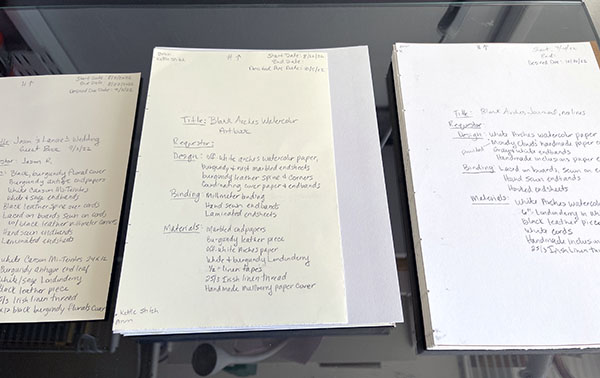
Who should be using a bookbinding commission tracking card like this?
If you’re a book artist creating multiple books at once, this tracking card can help you prioritize and stay organized. The card is especially useful if you’re charging for the commissions and/or tracking finances for accounting or tax purposes.
How does a book commission tracking card help me?
Every book is different. I might have three or four books of different binding and endpaper types going at once. Since some books are more involved than others, they can get wildly out of sync. These cards allow me pick up where I left off in between process steps. Here is how each item helps me:
- Requestor name – who is paying for the book
- Book block – type of book (published text, rebinding, blank or lined)
- Binding type* – how the requestor wants it bound
- Design choices – colors, theme, purpose, etc.
- Materials* – materials (determined with requestor) for making the book
- Start date – when I officially started the book
- Requested due date – determined with the requestor
- Completion date – actual finish date of the book
* Greatly affects pricing
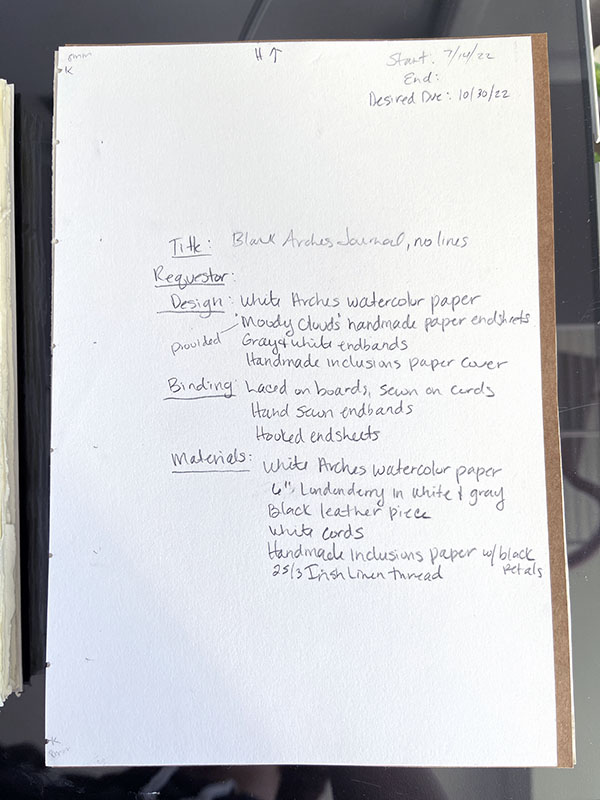
When do you create the book commission tracking card?
I create this card as soon as the requestor has made a commitment to the book’s production. This usually involves putting down a deposit, which I calculate after understanding the binding type and primary materials requested.
Where is the tracking card stored while the book is in production?
This card is always stored with the book. My bindery has some clearly defined areas where different parts of the process are completed (example: cutting, gluing, paring, folding, sewing, etc.). If the book block is being pressed, I lay the card in front of the press itself so I know which book(s) are under weight. If I’m in the middle of paring leather, I will store the card with the book block (under weight) until the leather is ready. You get the idea.
What happens to the tracking card when the book is finished?
Many times, the book will change throughout the process based on requestor asks or my own adjustments. I track all changes on the commission tracking card so I can give the requestor an informed final amount due. Once the book is completely paid for and off to its new home, the card is copied into an accounting file (Excel) and stored with the paid receipt in an organizer in my bindery. The organizer itself is a huge help, but I’ll save that for another post!
A few extra reasons to create a bookbinding commission tracking card
If you’re still on the fence, here are a few more good reasons to create tracking cards for book commissions:
- The sewing locations marked on the card can be used for future books of the same size and binding type, saving you time
- Start and end dates give you an idea of how long it actually takes you to make a book
- Tracking materials let you provide accurate pricing to the customer
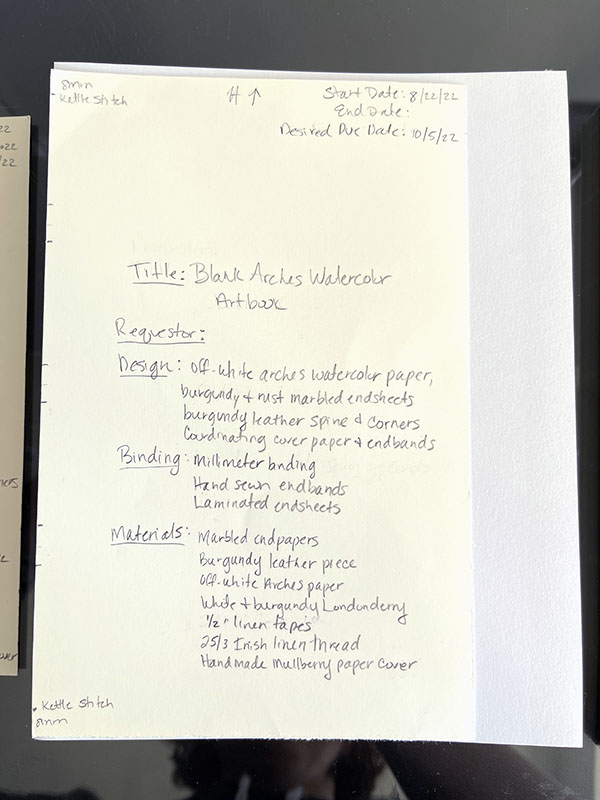
As an artist, I know how hard it can be to stay organized. I really hope this suggestion will help you in your bindery or other artistic work. Good luck!
More bookbinding goodness
✨ What tools do I need to get started bookbinding?
- Bookbinding Tools & Supplies Quick Start Guide – learn all about book making tools, which to buy first & where to go online
- Pick up my popular Complete Starter Bookbinding Tools Kit – all the bookbinding essentials in one spot
🌟 Looking for a simple way to start making books?
Try a Complete Book Materials Kit. Each one has everything you need (+ tutorials & videos) to make a beautiful book without all the fuss.
Thank you for taking me along on your book making journey!
Misty
